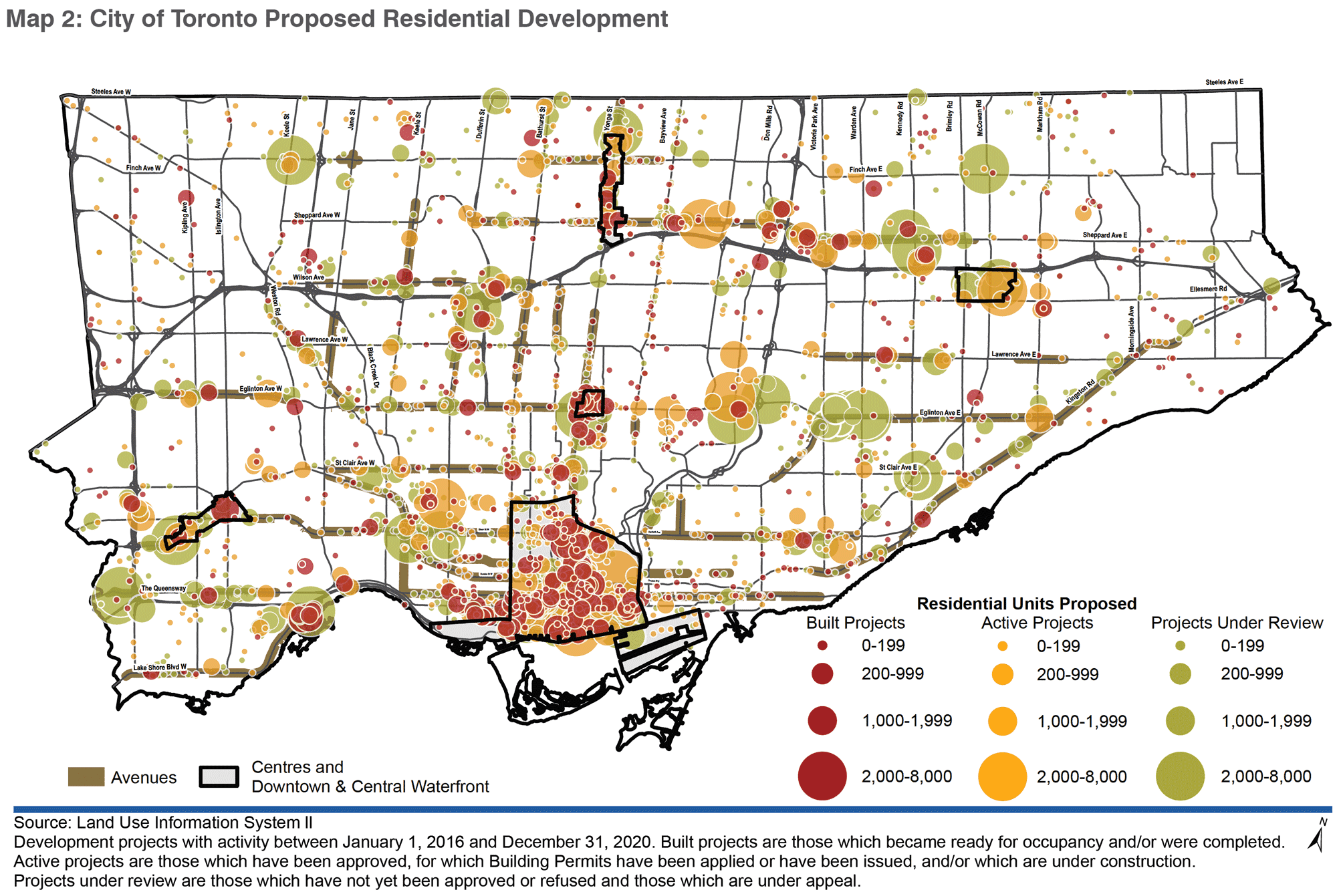
Source: Ministry of Municipal Affairs and Housing
Auditor General of Ontario – Land-Use Planning in the Greater Golden Horseshoe
As stated in the Auditor General’s December 2021 Value-for-Money Audit:
“Land-use planning is the process that guides decisions about where and what type of development can occur – for example, where to build homes, factories, hospitals, schools, road and other essential infrastructure – and where different types of development should not occur. Effective land-use planning ensures that lands, which are finite resources, are used and developed to meet the current and future needs of communities and the people who live in them, while safeguarding valuable resources such as agricultural lands, wetlands, forests, and distinctive natural features and landscapes.”
To avoid the negatives outcomes of past unchecked growth in the region, the Province developed the Growth Plan for the Greater Golden Horseshoe in 2006. It contains high-level policies about where growth and development should occur. Municipalities must meet the goals of the Growth Plan by meeting targets for: intensification, density, transit and greenfield.
The audit found that the goals of the Growth Plan have been undermined. Read the Auditor’s Report for further details on the following summary of the findings:
Insufficient data on whether 2006 Growth Plan policies have controlled urban sprawl in the GGH.
- Minimal information exists on the outcomes of Growth Plan policies.
- Many municipalities are falling short of 2006 Growth Plan targets.
- The Ministry is unable to monitor certain Growth Plan targets because of an absence of consistent and timely data.
Municipalities face challenges in implementing Province’s Growth Plan policies.
- Numerous changes in policies have created instability in the land-use planning process.
- Municipalities receive insufficient guidance from Ministry staff about how to implement policies in provincial plans.
Improvements needed in Ministry’s collaboration with Local and Provincial partners.
- Opportunities exist to better co-ordinate infrastructure planning with land-use planning.
- Some provincial ministries do not have the opportunity to provide input on municipal planning policies.
- Conservation authorities lose the independent power to exercise their mandate.
Broad and frequent use of Minister’s Zoning Orders undermine the land-use planning process.
- MZOs are being used to fast track development and circumvent normal planning processes.
- Lack of transparency in issuing MZOs opens the process of criticisms of conflict of interest and unfairness.
- MZOs disrupt other planning processes.
- “Enhanced” MZOs can now trump municipal site plan control, and are no longer required to be consistent with provincial land-use policy.
The report contains 12 recommendations, with 24 action items, to address the audit findings. To quote the report’s Overall Conclusion “Since 2015 the Ministry has not measured or reported on the effectiveness of land-use planning for achieving key goals of the Growth Plan. Ontarians need to know how well land development is meeting the current and future needs of communities and people who live in them, while safeguarding valuable resources such as agricultural lands, wetlands, forests, and other distinctive natural features and landscapes.”
Development Pipeline 2021
The profileTO bulletin published by Toronto City Planning illustrates how the city has developed and how it will continue to grow over times. It provides an overview of all development projects with approval or construction activity between January 1, 2016 and December 31, 2020. The 2020 Development Pipeline is comprised of 2,114 development projects. Cumulatively, these projects propose a record 503,362 residential units and 12,853,823 square metres of non-residential gross floor area (GFA).

